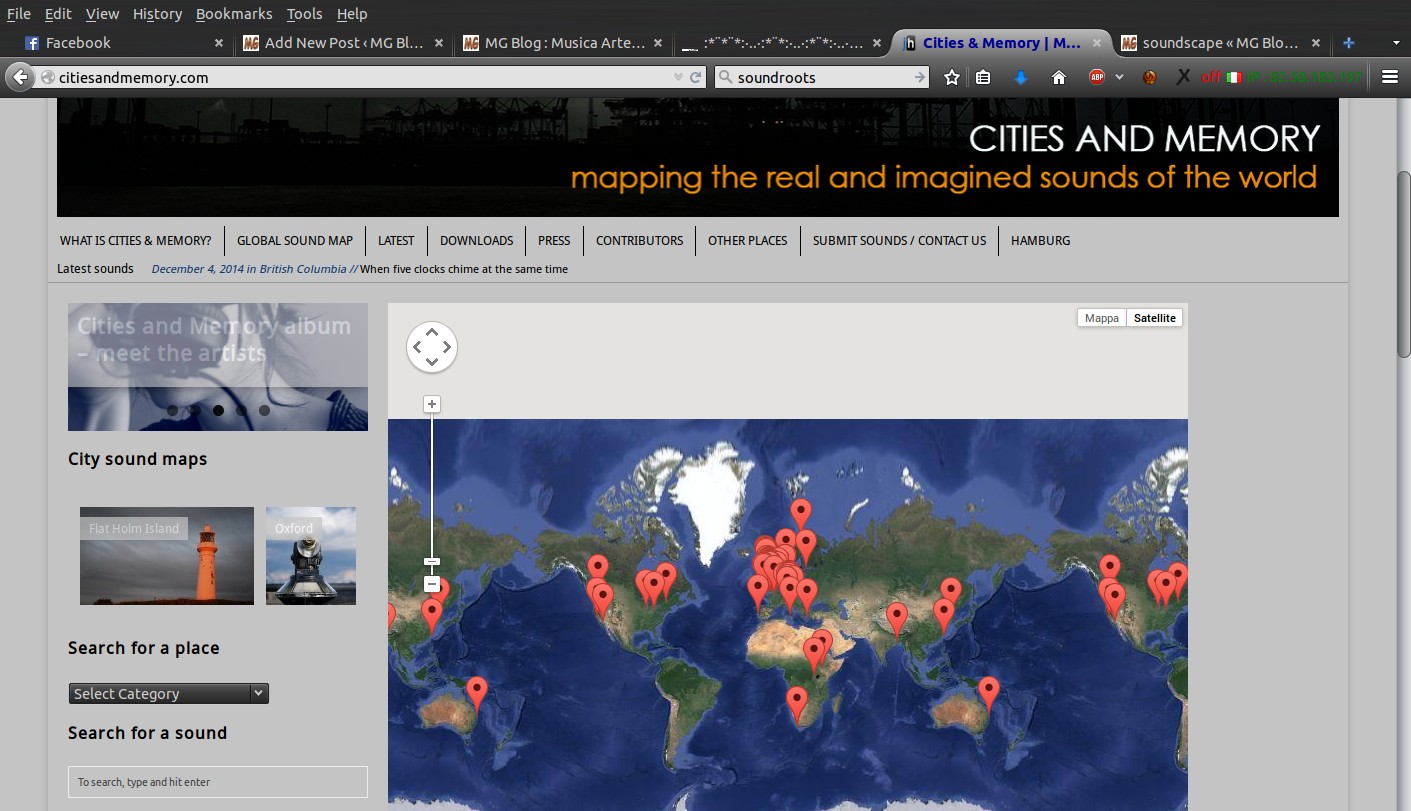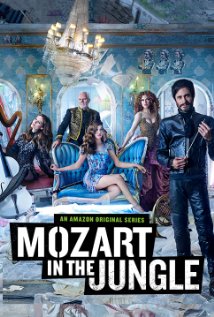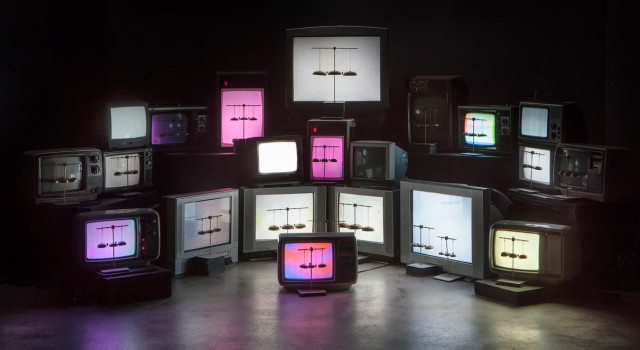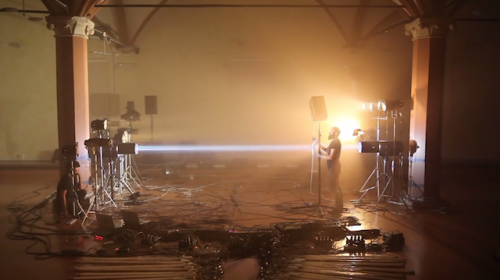 Cities & Memory è l’ennesima mappa sonora dell’orbe terracqueo, ma è anche una delle più curate perché ha varie sezioni, ordinamenti e collezioni.
Cities & Memory è l’ennesima mappa sonora dell’orbe terracqueo, ma è anche una delle più curate perché ha varie sezioni, ordinamenti e collezioni.
Cities and Memory is a global field recording & sound art work that presents both the present reality of a place, but also its imagined, alternative counterpart – remixing the world, one sound at at time.
Every faithful field recording document on the sound map is accompanied by a reworking, a processing or an interpretation that imagines that place and time as somewhere else, somewhere new. The listener can choose to explore locations through their actual sounds, or explore interpretations of what those places could be – or to flip between the two different sound worlds at leisure.
There are currently [dec 2014] more than 350 sounds featured on the sound map, spread over 23 countries.The sounds cover parts of the world as diverse as the hubbub of San Francisco’s main station, traditional fishing women’s songs in Lake Turkana, the sound of computer data centres in Birmingham, spiritual temple chanting in New Taipei City or the hum of the vaporetto engines in Venice.
The sonic reimaginings or reinterpretations can take any form, and include musical versions, slabs of ambient music, rhythm-driven electronica tracks, vocal cut-ups, abstract noise pieces, subtle EQing and effects, layering of different location sounds and much more.
The project is completely open to submissions from field recordists, sound artists, musicians or anyone with an interest in exploring sound worldwide – more than 60 contributors have got involved so far.
Cities and Memory takes its name and original inspiration from Italo Calvino’s book Invisible Cities, which explores how people can experience the same place in dramatically different ways.






